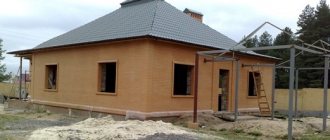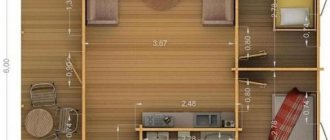The Morozovs are one of the most famous dynasties of entrepreneurs, philanthropists and philanthropists in Moscow. Its founder, Savva Vasilyevich, accomplished the almost impossible. Being a serf, he opened his own business, succeeded and was soon able to redeem himself and his family. Starting with a small silk weaving workshop, by the end of his life Savva Morozov was a merchant of the first guild and the owner of many factories. His descendants became the richest people in the country, distinguishing themselves not only in the field of industry.
After the October Revolution of 1917, all Morozov enterprises were nationalized. Their total capital was more than 110 million rubles.
Savva the First
The Old Believer serf Savva Morozov, who belonged to the landowner Nikolai Ryumin, never sat idle: he worked as a cab driver, a shepherd, and a worker. In his youth, he got a job as a weaver at the silk weaving factory of Fyodor Kononov in the village of Zuevo, Bogorodsky district, Moscow province. He closely followed how production was organized, dreaming of one day creating his own.
The recruiting service to which he was called could have closed this road. Morozov did not want to forget about his dream for 25 years (which was exactly how much was then required to devote to military affairs) and decided on an unprecedented act: he asked Kononov to lend him a large sum of money to pay him off, and switched to piecework wages. Incredibly, he was able to return the funds in just two years - he had to work hard, denying himself everything.
In 1797, Ulyana Afanasyevna, the daughter of a dyer, became his wife. Her father gave her a dowry of five gold rubles, and this money allowed Morozov to open his workshop.
After 14 years, he already had 20 hired workers working for him, who produced goods worth more than a thousand rubles a year - the investment of the enterprising Morozov paid off in full. In 1812, when the owners of all Moscow textile factories gave up their hands, looking at the burned city, Savva Vasilyevich was not at a loss, but turned the sad events to his own benefit. He knew: Moscow - along with all the provinces - was in great need of fabric. Shortly before the war, fabrics from England stopped coming to Russia, Napoleon contributed to this. Morozov used all the possible capacities of his workshop to establish decent production.
In 1821, he bought himself and his four sons from the landowner: Elisha, Zakhar, Abram and Ivan. The money they demanded for freedom was fabulous - 17 thousand rubles. A little later, a fifth son, Timofey, was born into the Morozov family.
It took Savva Vasilyevich another two years to acquire land from his now former owner in the village of Nikolskoye (now Orekhovo-Zuevo). It was there that a little later the famous Nikolskaya manufactory would be created, which would allow his family to never worry about money again.
Family firm reaches new level
Savva Vasilyevich founded a weaving factory in Moscow in 1825. At first, business went well, but after the Crimean War (1853–1856) it had to be closed. In 1830, Morozov opened a factory in Bogorodsk (now the city of Noginsk). There was also a dyeing and bleaching plant, as well as an office where the craftsmen were given yarn and received ready-made fabric from them.
In 1838, Morozov Sr. opened the Nikolskaya paper-spinning and mechanical weaving factory, and a little later a spinning building appeared next to the latter. Around the same time, the entrepreneur began to have health problems, and he gradually began to transfer his business to his sons. In 1842, Zakhar Morozov began managing the Bogorodsky establishment - he moved it to the village of Glukhovo, and five years later he built a mechanical weaving factory there. In the same year, the merchant family received hereditary honorary citizenship.
In 1855, Zakhar Savvich created the share partnership “Company of Bogorodsko-Glukhovskaya Manufactory”, and in 1860 the share trading house “Savva Morozov with Sons” was founded - the family business reached a new level. Savva Vasilyevich died that same year.
Advantages of the Morozov House workshop
The experts themselves highlight the following advantages over their competitors:
- In the field of ready-made projects: saving both time and money on design development.
- Extensive experience in remote work.
- Cooperation between the client directly and a specialist - designer, architect, landscape designer.
- The customer himself chooses the presence of one or another section in the overall composition of the project.
- There is no overpayment for the maintenance of a director, economist, cashier, or managers.
- Individual approach to every customer.
Timothy, who knew no bondage
The children of Savva Vasilyevich became famous throughout the country - all except Ivan, who was not interested in entrepreneurship. The youngest, Timofey Savvich, was most favored by fame. His father treated him more favorably than the other children. He did not even hide the reasons for his special attitude: Timofey was the only one of the brothers who did not experience what serfdom was, he was born a free, free man - therefore, he would be able to conduct business without regard to anyone.
In the early 1850s, his father entrusted Timofey with organizing the work of his factories and trading. Seven years later, the resourceful Timofey began to acquire land for a new factory in the Tver province, which once again earned his father’s approval. The Tver manufactory was created in 1859. In 1873, Timofey Morozov renamed the family enterprise into the Partnership of the Nikolskaya Manufactory “Savva Morozov’s Son and Co.” After a while, it became the best among Russian textile enterprises.
Morozov purchased machines in England, and the dyes were also imported. It was difficult to compete with his products. Timofey Savvich received several million rubles every year. The village of Nikolskoye at that time was similar to the Morozovs’ possession: all the residents worked for Timofey Savvich. His contribution to the country’s economy was so great that he, the first in Russia, was awarded the title “Mr. Manufacturing Advisor.” In 1882, he was awarded the Order of St. Anne “for special works on the All-Russian Industrial and Art Exhibition in Moscow.”
In addition to his main activities, he was a co-founder of the Moscow Merchant and Volga-Kama Banks. He paid scholarships to students of the Moscow Technical School and invested money in the construction of a gynecological clinic on Devichye Pole.
Formula for Prosperity
The Morozovs often entered into marriages with representatives of other influential families of merchants or industrialists. So, the wife of Timofey Savvich was Maria Simonova, the cousin of the manufacturer, book publisher and owner of the Kuntsevo estate Kozma Soldatenkov. The couple settled in Trekhsvyatitelsky Lane, on the territory of their rich estate they had their own prayer house and greenhouse. In general, the married couple tried to adhere to the Old Believer way of life, but could not refuse noisy receptions of guests.
Maria supported her husband in all his endeavors. For more than 20 years, she helped charities and donated to churches, for which she received a distinction - the first among merchants in Russia. She helped poor talented girls get an education and allocated money for scholarships at the Moscow gymnasium. Maria Feodorovna left behind the largest fortune in Russia - 30 million rubles.
Her youngest son Sergei opened the Museum of Handicrafts - the basis of the collection was the exhibits he acquired from the handicraft department of the All-Russian Art and Industrial Exhibition of 1882. Soon the philanthropist moved the museum from the wing of the mansion on the corner of Znamenka and Vagankovsky Lane to a building rebuilt for him in Leontyevsky Lane.
Savva the Second and love in spite of
Maria Fedorovna had a difficult relationship with her son Savva, named after his grandfather. The guy's family was considered crazy. He refused the title of nobility, which the king himself wanted to bestow on him. Ignoring the discontent of his parents, at the age of 26 he married Zinaida Morozova, the ex-wife of his own cousin, Sergei Vikulovich. A scandal broke out: a divorced woman, and a relative at that! But Savva Timofeevich was adamant. As a wedding gift, he built a neo-Gothic mansion for his beloved on Spiridonovka. The architectural project was carried out by Fyodor Shekhtel, and the interior design was carried out by the then little-known Mikhail Vrubel. Balls, social receptions, dinner parties - with the light hand of the hostess, fun always reigned in this house.
Shekhtel's masterpiece: experts confirmed the value of Savva Morozov's mansion on Spiridonovka
Savva Morozov is known primarily as a philanthropist. He generously helped the Moscow Art Theater, sparing no expense on its development. For example, a building was built on Kamergersky Lane with Morozov’s money. His brother Sergei also gave two thousand rubles for the theater.
A graduate of Moscow University and Cambridge, at the age of 29 Savva Timofeevich became an elected member of the Moscow Exchange Society. He strengthened the position of the Nikolskaya manufactory he inherited, turning it into one of the largest enterprises in Russia. He was concerned about the situation of the workers, he made sure that they received decent wages and worked in good conditions. Like his father, he helped them improve their skills. Not forgetting the specialty of a chemist, which he received in England, Savva Timofeevich founded an anonymous society of combined chemicals in the Urals, which produced dyes for fabric.
Savva Morozov supported the 1905 revolution. He donated money to the illegal newspaper Iskra and sponsored the publication of Novaya Zhizn and Borba.
House projects
House projects by Evgeniy Moroz are also presented on his Internet resource “Morozov House”. This:
- One- and two-story houses.
- Buildings with an attic.
- Guest houses.
- Houses for two owners.
- Residential buildings for small plots.
- Economic buildings.
Using a convenient filter, you can find an already realized project of Evgeniy Moroz’s house: see the general description, 3D visualization, plan of each floor, basement, brief estimate of materials, scope of work. You can filter available projects by:
- Area of the designed premises.
- Floors.
- Number of rooms.
- The presence of an attic, garage, basement.
The most eccentric Morozov
Despite his renunciation of the nobility and scandalous marriage, the most extravagant representative of the family was not Savva the Second, but Arseny Morozov, his nephew. The young man was not interested in family matters; He preferred charity, various spiritual practices and travel to solving work issues.
Once in Portugal, he saw the Palacio Nacional da Pena palace and realized: in Moscow he needed a house in a pseudo-medieval style. They began to openly laugh at the eclectic mansion even during construction. Arseny’s mother, Varvara Alekseevna, added a sharp phrase: “Before, I was the only one who knew that you were a fool, but now all of Moscow will know about it.”
Arseny Morozov died due to stupidity. During one of the parties, he stated that he could shoot himself in the leg and not feel pain - all thanks to esoteric exercises. Friends did not believe - the young man grabbed the gun... It is not known whether he felt physical suffering or not, but he died from blood poisoning.
Avant-garde planetarium, communal house, eclectic mansion. Six important buildings in the Presnensky district and surrounding area
Varvara Alekseevna was also a famous philanthropist. It was she who insisted on building a psychiatric clinic on Devichye Pole. She also helped Moscow University, provided scholarships, and schools were created with her money. Varvara Morozova founded the reading room named after I.S. Turgenev - it became the first free library in the city. She especially loved books: in the estate on Vozdvizhenka, which she inherited after the death of her husband, Abram Morozov, she organized a literary salon. His guests were Valery Bryusov, Andrey Bely, Alexander Blok and others.
Stage career
Because of KVN, the student was almost expelled for absenteeism.
Tatyana was born in Ufa into a Russian-Tatar family. By her own admission, as a child she did everything: dancing, drawing, sports. “I didn’t have a volleyball career - I was so crazy that in the sixth grade I was mistaken for a second grader. However, I learned to play volleyball for myself. In general, I am a very enthusiastic person; I love to sew, cook, and make things,” the artist shared.
After school, the girl entered the Bashkir Pedagogical University and received a diploma as a teacher of drawing and drawing. She did not have a chance to work in her profession because of her passion for KVN. At first, the artist played for the “Real Team”, then moved to the Belarusian team “Vdrebezgi”, and then to the Chelyabinsk “LUNA”. Tanya’s parents were already accustomed to their daughter touring the country, so they calmly let her go to Moscow.
“After graduating from KVN, I was offered to participate in the show “La femme reticule.” Mom was always wise, she never shouted: “How? Where will you go? What will you do there? No, she just said that if they call you, go, but don’t stay there, please, just to stay, they say, we are always waiting for you, you are our beloved child. Well, besides me, by the way, there is also my sister Lena,” Tatyana explained.
Passion for impressionism
The Tver manufactory was led for some time (and very successfully) by Ivan Morozov, the son of Abram Savvich. He also participated in the affairs of the Moscow Merchant Bank, and was one of the founders of the Russian Joint-Stock Company of the Coke Industry and Benzene Production.
But his real love was painting. He was delighted with the works of the French Impressionists. Ivan Morozov collected over 600 works - one of the largest collections in the world. He didn’t care about the price of masterpieces - the main thing was that he could admire them whenever he wanted. The paintings were located in his eclectic mansion on Prechistenka, which miraculously survived the fire of 1812 and was later rebuilt. When rebuilding the house, Ivan Abramovich asked to provide a room with thick stone walls and a concrete ceiling. If necessary, the entire collection could be hidden in it.
After the revolution, his collection was nationalized. Ivan Abramovich was offered to become deputy director of the new museum, which was never opened. A little later, the collection ended up in the Museum of New Western Art, and today it can be seen in the Pushkin Museum named after A.S. Pushkin and the Hermitage.
Advantages of a terrace
An extensive and beautifully designed terrace in the modern architecture of a private house is not just an original element of the exterior, but a functional part of it, expanding the possibilities of outdoor recreation, regardless of seasonal and weather conditions. Installing it for a residential building provides several advantages:
- Advantageous placement of a festive table in nature, as well as the possibility of installing chairs, sun loungers, and a barbecue.
- Improving the appearance is a decorative component and increasing the overall prestige of the building.
- When equipped with evening lights, it turns into an indoor dance floor.
- When arranging open openings with sliding elements, there is the possibility of light summer and warm winter recreation options.
Hospital and Porcelain Museum
The founder of the famous Morozov Children's Hospital is Alexey Morozov, the son of Vikula Eliseevich. Alexey Vikulovich continued family traditions regarding charity and patronage of the arts. The situation that had developed in Moscow by 1900 did not please him at all: children suffering from whooping cough, diphtheria and other diseases did not receive proper treatment. Morozov decided to build his own hospital where children would be treated for free. He invested his father’s inheritance - 400 thousand rubles - into the construction. The hospital was named in memory of Vikul Eliseevich.
Morozov Hospital: from vital necessity to technological revolution
Three years earlier, Morozov headed the Partnership of Vikula Morozov's Sons, but then abandoned leadership in favor of his brother Ivan. In the first place, the creator of the Morozov Hospital had his collection of icons, porcelain and engravings - he set aside an entire mansion in Vvedensky Lane, specially rebuilt for this. By the way, architect Fyodor Shekhtel and artist Mikhail Vrubel met again on this project. After the revolution, the Porcelain Museum (today the Museum of Ceramics in Kuskovo) was opened in this house, and Alexey Morozov became its custodian.
Ready-made house projects, cottages
We invite you to visit our new website “Morozov House”, which is more convenient and informative. Link HERE.
Standard design includes developments that can be used in the process of building a house without any additions. The basic set of documentation includes: Show in full…
The architectural section, which contains detailed plans of the house, indicates the exact parameters of the building, etc. Structural section, which consists of layout diagrams for the foundation, stairs, rafter structures, etc. Sections on the design of electricity supply, water supply, heating system and other communications.
Advantages of standard projects
Ready-made design has a number of advantages, the main ones are:
relatively low cost, known in advance; saving time on project development; availability of a complete package of documentation that does not need to be clarified or changed during the construction process; standard projects are time-tested. ☎ 8-(495)-509-25-99











